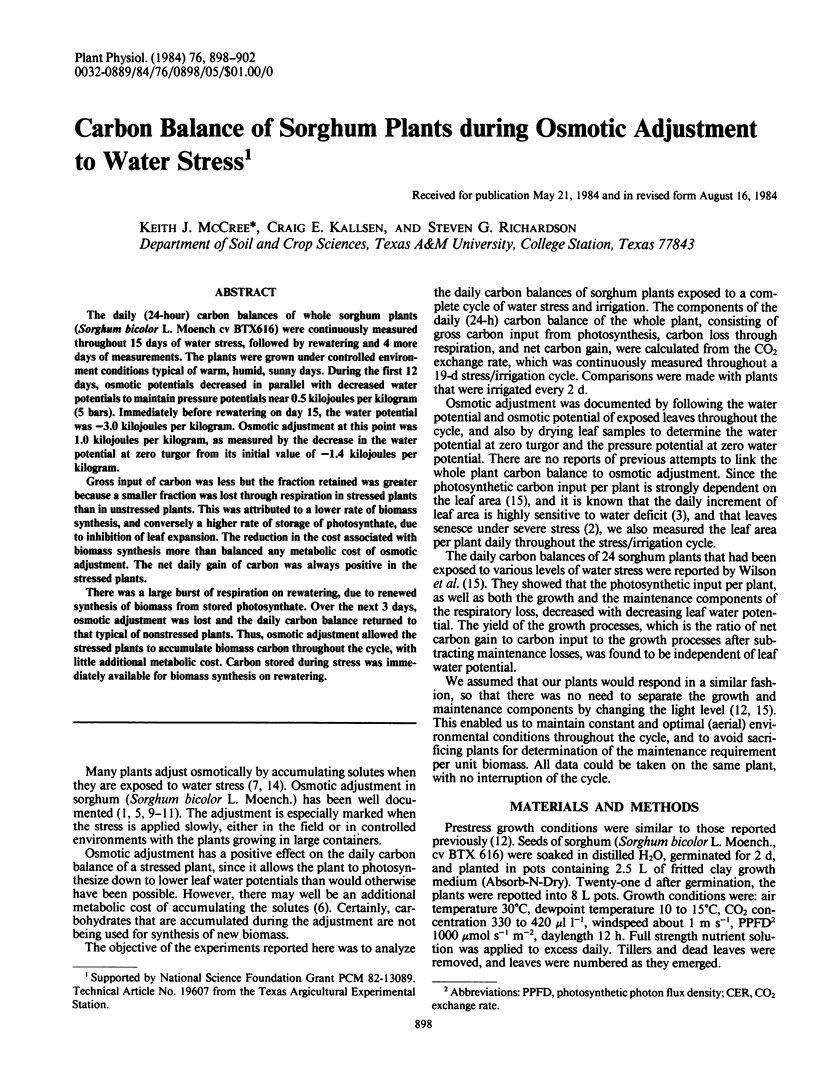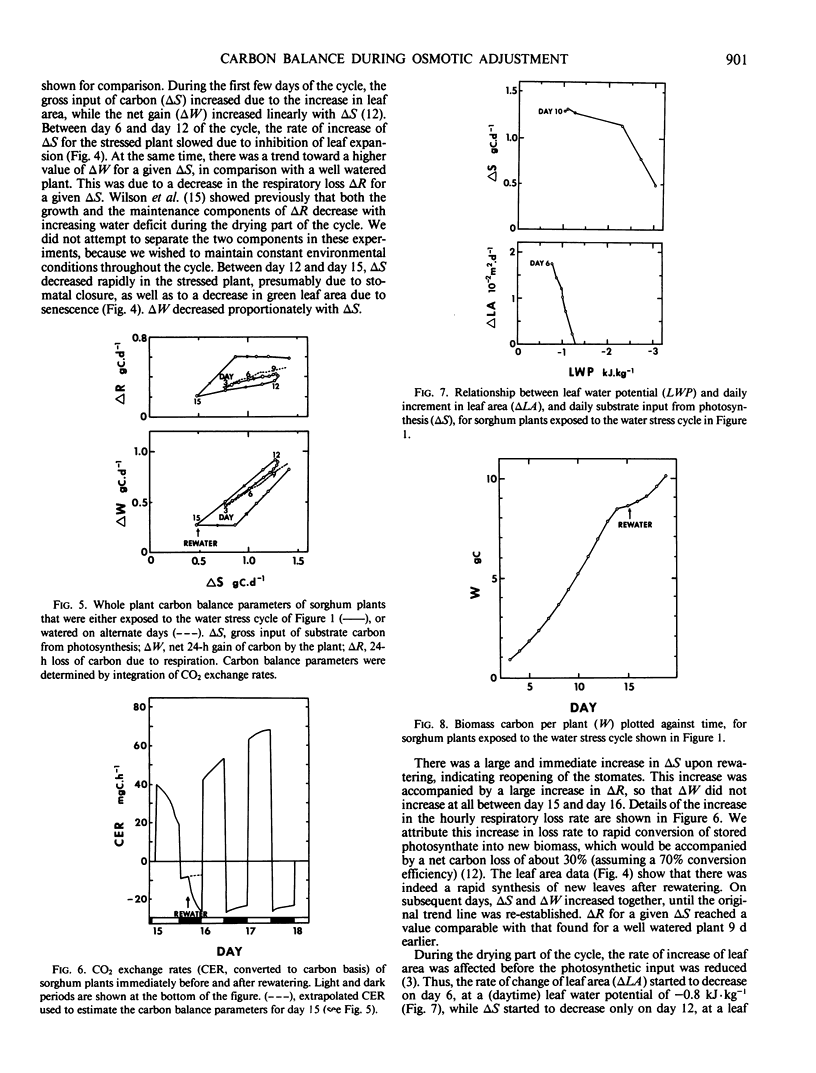Abstract
The daily (24-hour) carbon balances of whole sorghum plants (Sorghum bicolor L. Moench cv BTX616) were continuously measured throughout 15 days of water stress, followed by rewatering and 4 more days of measurements. The plants were grown under controlled environment conditions typical of warm, humid, sunny days. During the first 12 days, osmotic potentials decreased in parallel with decreased water potentials to maintain pressure potentials near 0.5 kilojoules per kilogram (5 bars). Immediately before rewatering on day 15, the water potential was −3.0 kilojoules per kilogram. Osmotic adjustment at this point was 1.0 kilojoules per kilogram, as measured by the decrease in the water potential at zero turgor from its initial value of −1.4 kilojoules per kilogram.
Gross input of carbon was less but the fraction retained was greater because a smaller fraction was lost through respiration in stressed plants than in unstressed plants. This was attributed to a lower rate of biomass synthesis, and conversely a higher rate of storage of photosynthate, due to inhibition of leaf expansion. The reduction in the cost associated with biomass synthesis more than balanced any metabolic cost of osmotic adjustment. The net daily gain of carbon was always positive in the stressed plants.
There was a large burst of respiration on rewatering, due to renewed synthesis of biomass from stored photosynthate. Over the next 3 days, osmotic adjustment was lost and the daily carbon balance returned to that typical of nonstressed plants. Thus, osmotic adjustment allowed the stressed plants to accumulate biomass carbon throughout the cycle, with little additional metabolic cost. Carbon stored during stress was immediately available for biomass synthesis on rewatering.
Full text
PDF




Selected References
These references are in PubMed. This may not be the complete list of references from this article.
- Boyer J. S. Leaf enlargement and metabolic rates in corn, soybean, and sunflower at various leaf water potentials. Plant Physiol. 1970 Aug;46(2):233–235. doi: 10.1104/pp.46.2.233. [DOI] [PMC free article] [PubMed] [Google Scholar]
- Hsiao T. C., O'toole J. C., Yambao E. B., Turner N. C. Influence of Osmotic Adjustment on Leaf Rolling and Tissue Death in Rice (Oryza sativa L.). Plant Physiol. 1984 Jun;75(2):338–341. doi: 10.1104/pp.75.2.338. [DOI] [PMC free article] [PubMed] [Google Scholar]
- Jones M. M. Osmotic adjustment in leaves of sorghum in response to water deficits. Plant Physiol. 1978 Jan;61(1):122–126. doi: 10.1104/pp.61.1.122. [DOI] [PMC free article] [PubMed] [Google Scholar]
- Michelena V. A., Boyer J. S. Complete turgor maintenance at low water potentials in the elongating region of maize leaves. Plant Physiol. 1982 May;69(5):1145–1149. doi: 10.1104/pp.69.5.1145. [DOI] [PMC free article] [PubMed] [Google Scholar]


